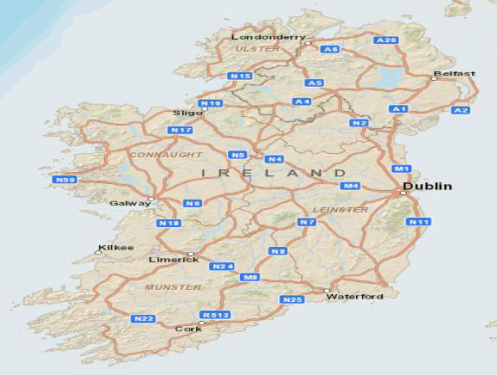In the previous sections, we explored spatial data and SRS. They are the key elements you need to build your map. Indeed, maps are a planar representation of spatial data. You need to collect the appropriate data to represent the real objects you want to include in your map, and you need to choose an SRS to organize your data onto the map.
Keep in mind that maps are representations, a proposition of yours. They are the way you express your knowledge and your vision of the world. To fully accomplish this, there is a third basic ingredient for your map: symbology.
Symbology enables you to add information to the features shown on a map. For example, colors can be used to indicate a classification of roads. Imagine you need to produce a map of a country with a road network. You have a vector dataset containing road polylines. A simple approach is to render all features with the same symbol, as shown in the following figure. The map is not really informative unless you are a transportation expert. You won't extract any information from the map and it looks ugly too.

Let's take a look at a similar map produced with ArcGIS Online (http://www.esri.com/software/arcgis/arcgisonline).
It contains the road network symbolized with different colors and line widths, labels showing you highway codes, and major towns represented with small circles and labels. Besides, there is a background depicting heights with colors and shading. Does it now look more familiar to you?

In Chapter 6, Styling Your Layers, you will learn how to apply symbols in GeoServer to produce maps like the previous one. For now, you need to familiarize yourself with simple and thematic maps.















































































